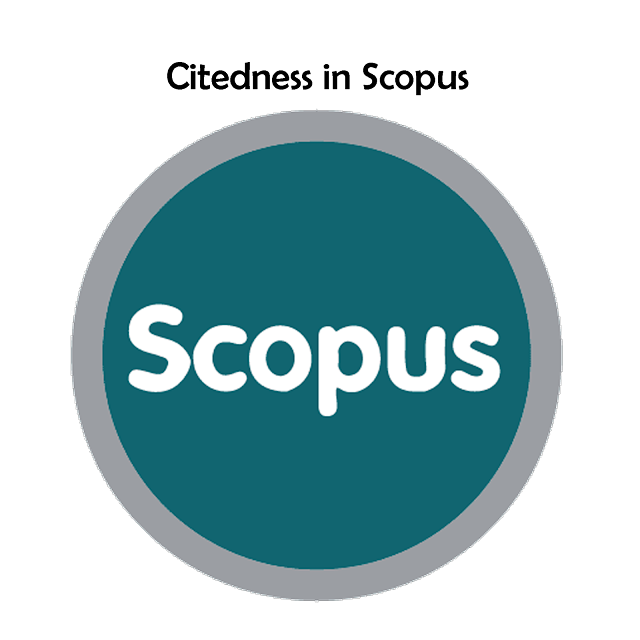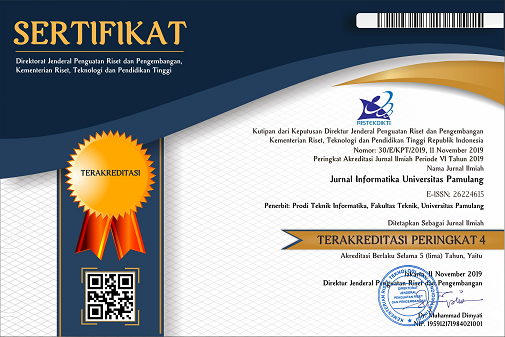Pengembangan Aplikasi Pembelajaran Ilmu Tajwid Menggunakan Pemrograman Java Android
DOI:
https://doi.org/10.32493/informatika.v6i3.10053Keywords:
Tajwid, Android, Mobile Programming, LearningAbstract
Tajweed is a very important science to learn how to read the Koran, a person will not be able to read the verses of the Koran without knowing the correct and good knowledge of tajwid. However, in this modern era, many have left books as literature. Therefore, the embedding of tajwid into android devices is very helpful for the community in learning. Android is a Linux-based operating system developed by Google. Google provides android studio software as the official IDE for making android applications. Making applications with android studio software using the Java programming language, while the appearance of the application is made using XML. Making applications in scientific research is made in several stages, namely starting with planning, needs analysis, application design, application creation, testing and distribution of applications. After going through all these stages, this scientific research resulted in an application with the name Tajwid Android. This application can only be operated on mobile phones with a minimum of the Jelly Bean version of the Android operating system. The android tajwid application can provide information about the science of recitation with a display that is easy to understand and attractive. This Tajweed Learning Application is published on the internet so that it can be accessed easily by the public.References
A. Ismail, A. Wardani. (2019). Aplikasi Pembelajaran Ilmu Tajwid Berbasis Android. PROSIDING SEMANTIK, Vol 2, No 1.
A. Sudiarjo, A. R. Mariana, & W. Nurhidayat. (2015). Aplikasi Pembelajaran Ilmu Tajwid, Waqaf dan Makharijul Huruf Berbasis Android. Jurnal Sisfotek Global, STMIK Bina Sarana Global, Vol 5, No 2.
A.S Rosa dan Salahuddin M. (2011). Modul Pembelajaran Rekayasa Perangkat Lunak (Terstruktur dan Berorientasi Objek. Bandung: Modula.
Alam, T. (2008). Ilmu Tajwid Populer 17 Kali Pandai. Jakarta: AMZAH.
Hanif, A. Rifqi. (2007.). Pelajaran Ilmu Tajwid. Surabaya: Terbit Terang.
Herlinda, D. Katarina, & E. W. Ambarsari. (2019). Automation Testing Tool dalam Pengujian Aplikasi Belajar Tajwid pada Platform Android. STRING, Satuan Tulisan Riset dan Inovasi Teknologi, Vol 4, No 2.
I. Askuri, K. Yahya, & N. Fuad. (2017). Aplikasi Pengenalan dan Pembelajaran Ilmu Tajwid Berbasis Android. J-TIIES, Vol 1 No. 1, Halaman 255-260.
Madyan, A. Shams. (2008). Peta Pembelajaran Al-Qur’an. Yogyakarta: Pustaka.
Qattan, S. M. , H. A. Rafiq El-Majni. (2006.). Pengantar Studi Ilmu Al-Qur’an. Jakarta: Pustaka Al-Kautsa.
RI, Departemen Agama. (2010.). Al-Qur’an dan Tafsirnya. Jakarta: Lentera Abadi.
Downloads
Published
Issue
Section
License
Authors who publish with this journal agree to the following terms:
- Authors retain copyright and grant the journal right of first publication with the work simultaneously licensed under a Creative Commons Attribution-NonCommercial 4.0 International (CC BY-NC 4.0) that allows others to share the work with an acknowledgement of the work's authorship and initial publication in this journal.
- Authors are able to enter into separate, additional contractual arrangements for the non-exclusive distribution of the journal's published version of the work (e.g., post it to an institutional repository or publish it in a book), with an acknowledgement of its initial publication in this journal.
- Authors are permitted and encouraged to post their work online (e.g., in institutional repositories or on their website) prior to and during the submission process, as it can lead to productive exchanges, as well as earlier and greater citation of published work (See The Effect of Open Access).
Jurnal Informatika Universitas Pamulang have CC-BY-NC or an equivalent license as the optimal license for the publication, distribution, use, and reuse of scholarly work.
In developing strategy and setting priorities, Jurnal Informatika Universitas Pamulang recognize that free access is better than priced access, libre access is better than free access, and libre under CC-BY-NC or the equivalent is better than libre under more restrictive open licenses. We should achieve what we can when we can. We should not delay achieving free in order to achieve libre, and we should not stop with free when we can achieve libre.
Jurnal Informatika Universitas Pamulang is licensed under a Creative Commons Attribution-NonCommercial 4.0 International (CC BY-NC 4.0)
YOU ARE FREE TO:
- Share : copy and redistribute the material in any medium or format
- Adapt : remix, transform, and build upon the material for any purpose, even commercially.
- The licensor cannot revoke these freedoms as long as you follow the license terms





